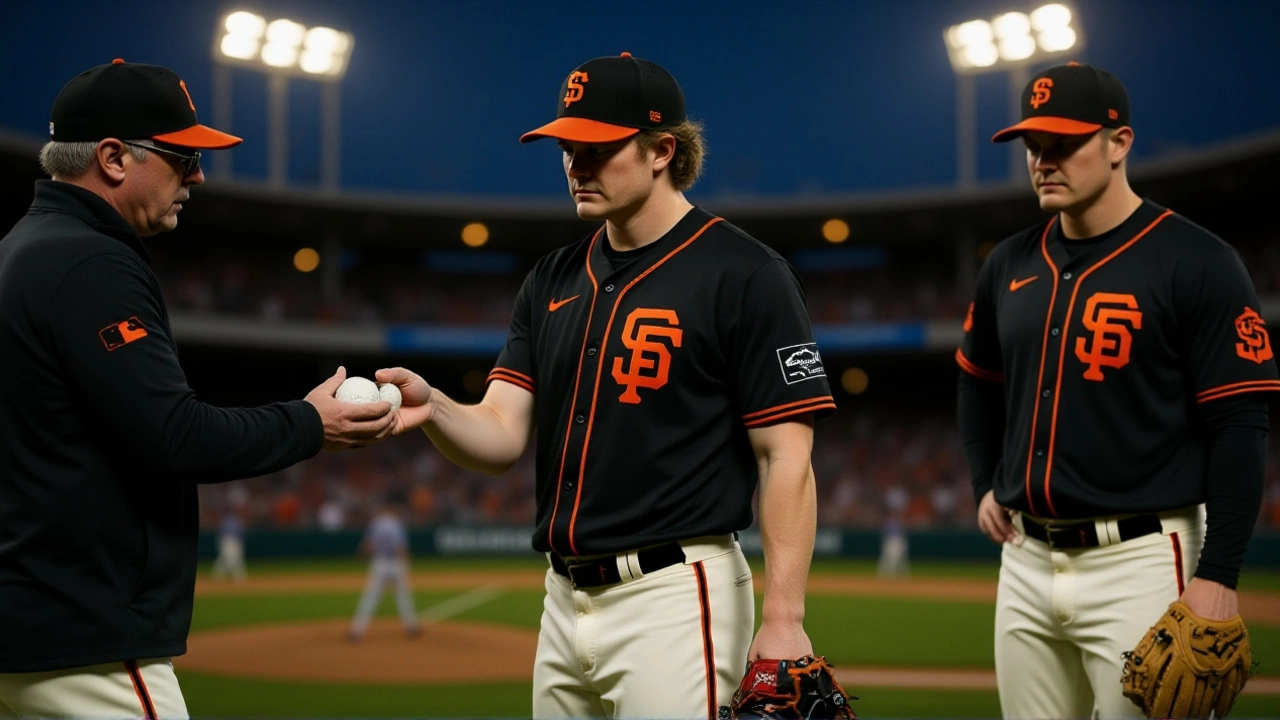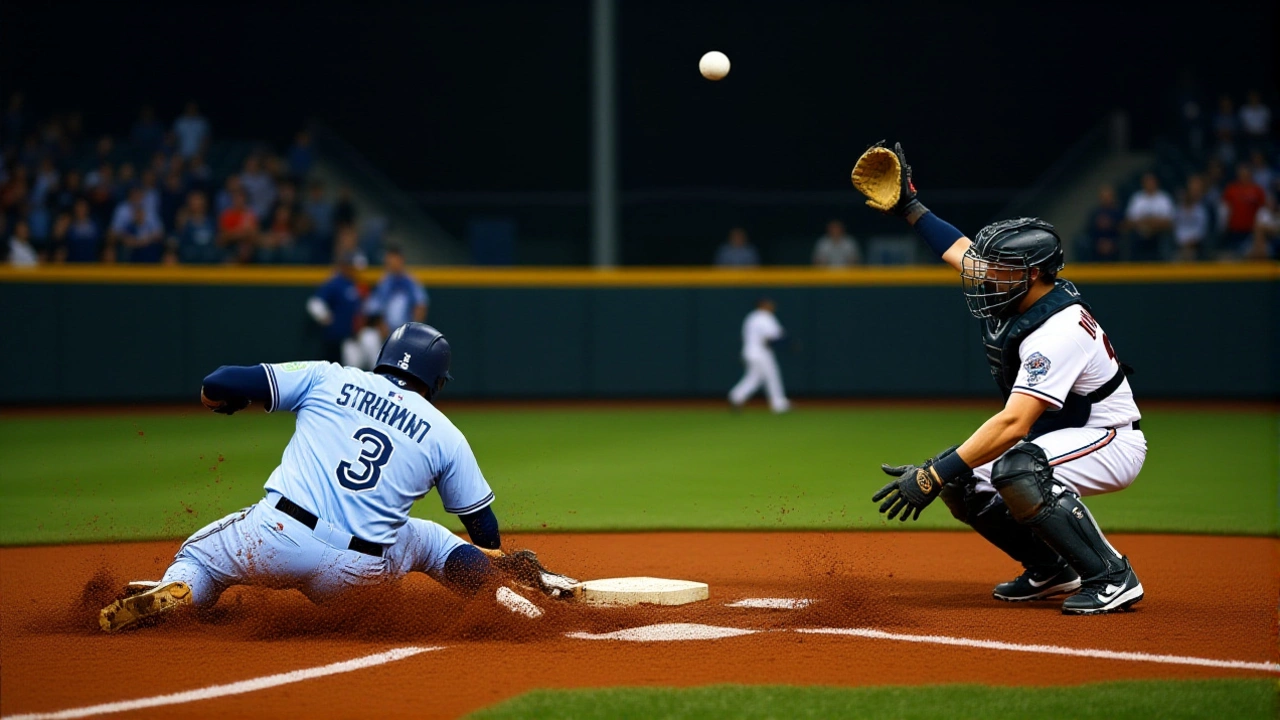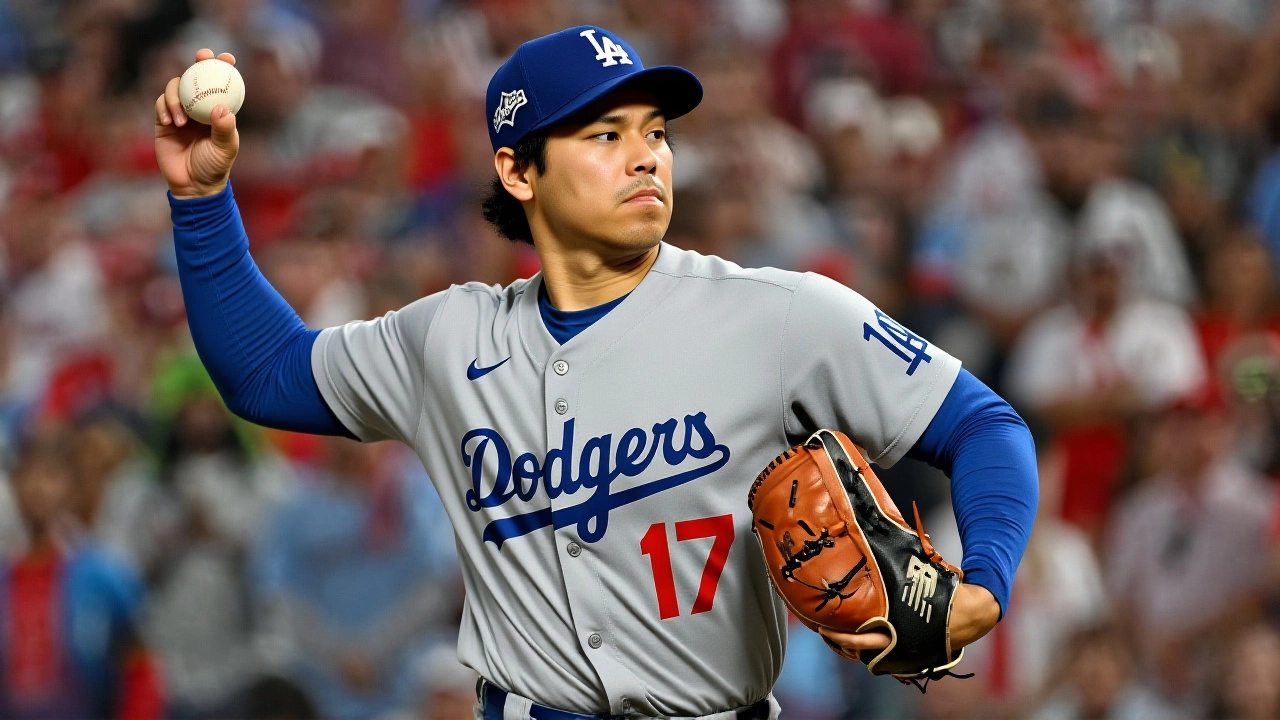When Shohei Ohtani took the mound at Dodger Stadium on Thursday, October 17, 2025, everyone expected a good effort – nobody imagined a historic two‑way showcase.
Instead, Los Angeles Dodgers turned the night into a parade, beating the Milwaukee Brewers 5‑1 and completing a clean‑sweep of the NLCS Game 4Los Angeles. The win clinched the National League pennant and sent the Dodgers marching toward a World Series showdown.
Game Recap and Ohtani's Historic Night
Ohtani dazzled on both sides of the ball. He fanned ten batters over six scoreless innings, a strikeout‑total that topped every Dodgers starter in the series. Then, with the bat, he launched three homers – the longest a 469‑foot monster that cleared the right‑field pavilion, the longest blast recorded at Dodger Stadium during the 2025 season.
The crowd’s roar after the 469‑foot shot was deafening, a sound that seemed to echo the magnitude of what just happened. "We knew we had a chance to win, but Ohtani turned it into a legend," said Dave Roberts, the Dodgers’ manager. "His ability to dominate as a pitcher and then swing that bat is something you write about for a lifetime."
Beyond Ohtani, the Dodgers added runs on a two‑run single by Mookie Betts and a solo homer from Freddie Freeman. Brewers’ lone run came on a solo shot by William Contreras in the fourth inning.
Dodgers' Pitching Dominance Through the NLCS
The Dodgers’ rotation has been the story of this series. In Game 1, Blake Snell faced the minimum number of batters over eight innings, allowing just one run. Game 2 featured Yoshinobu Yamamoto tossing the first complete postseason game in eight years. Tyler Glasnow contributed 5.2 innings of one‑run ball in Game 3.
Collectively, the rotation posted a staggering 0.63 ERA with 35 strikeouts in 28.2 innings – an average of 11.1 K/9. Over the entire 2025 postseason, Dodger starters logged nine quality starts in ten outings and gave up one or fewer earned runs seven times.
These numbers put the Dodgers’ staff among the best ever in a championship series. In comparison, the Brewers could muster only 1.92 ERA across the same span, largely because they never got to the plate enough to offset the Dodgers’ firepower.

Brewers' Regular‑Season Firepower vs. Postseason Reality
The Brewers entered October riding a 97‑65 record, highlighted by a league‑best .381 on‑base percentage and a tie for the NL lead in batting average at .296. Their offense was built on patience, speed and aggressive baserunning – a formula that proved lethal all season.
Yet the postseason spotlight exposed cracks. In Game 1, an uncharacteristic misplay by Abner Uribe – a dropped pickoff attempt that turned into a wild pitch – added an extra run to the Dodgers’ tally. The Brewers’ hitters collectively went 7‑31 with just one extra‑base hit across the four games.
"We were a different team in October," admitted Pat Murphy, Milwaukee’s manager. "Our regular‑season rhythm didn’t translate when we faced a rotation that could shut us down before we even found a groove."
Statistically, the Brewers’ on‑base percentage dropped to .272 in the NLCS, and they struck out 28 times – more than double their season average per game.
What the Sweep Means for Los Angeles and Milwaukee
For the Dodgers, the sweep not only guarantees a World Series berth but also cements their 2025 roster as one of the most versatile ever assembled. Ohtani’s two‑way heroics will likely influence how teams evaluate dual‑role players in the future.
Meanwhile, Milwaukee faces a sobering off‑season. Their front office now must decide whether to double down on the hitting‑first philosophy or pivot toward bolstering pitching depth. The Brewers’ payroll sits at roughly $2.3 billion, leaving room for strategic acquisitions, but the market for elite starters is thin after the early‑season free‑agent frenzy.
The sweep also reshapes the narrative of the National League. The Dodgers become the first team since 2010 to sweep a best‑of‑seven NLCS, a feat that adds to their legacy of postseason poise.

Looking Ahead: World Series Matchup and Legacy
Next up, the Dodgers will face the American League champion, the Texas Rangers, in what promises to be a classic showdown of power versus pitching.
Ohtani’s dual performance gives Los Angeles a strategic advantage: a front‑of‑the‑line ace who can also swing a bat that can change a game in an instant. If he repeats even a fraction of his Game 4 heroics, the World Series could tilt heavily in Dodgers’ favor.
Analysts are already debating how much weight to give Ohtani’s 10‑strikeout, three‑homer night. While some argue it’s an outlier, others point to his 2025 regular‑season line (13‑7 win‑loss, 2.84 ERA, 28 HR) as evidence of a truly elite two‑way talent.
Regardless of how the series unfolds, this NLCS will be remembered for its extremes: a rotation that barely missed perfection, a batter‑pitcher who rewrote the playbook, and a Brewers club that saw its season‑long rhythm evaporate under pressure.
- Final score: Dodgers 5, Brewers 1
- Ohtani: 10 K, 3 HR, 469‑ft blast
- Dodgers rotation NLCS ERA: 0.63
- Brewers regular‑season OBP: .381 (league best)
- World Series opponent: Texas Rangers
Frequently Asked Questions
How does Ohtani’s two‑way performance impact the Dodgers’ World Series chances?
Ohtani gives Los Angeles a rare tactical edge: a starting pitcher who can also deliver multi‑home‑run power. If he replicates even half of his Game 4 output, the Dodgers can effectively field a ninth‑slot ace without sacrificing offensive depth, dramatically improving their odds against the Rangers.
What lessons might the Brewers take from this sweep?
The loss highlights the need for a more adaptable lineup against elite pitching. Milwaukee’s front office may prioritize acquiring a high‑strikeout starter or a versatile hitter who can handle dominant arms, while also reinforcing defensive fundamentals to cut down on costly miscues.
How historic is a 469‑foot home run at Dodger Stadium?
At 469 feet, Ohtani’s blast set the longest home‑run mark in Dodger Stadium for the 2025 season, surpassing the previous record of 452 feet set by Cody Bellinger in 2019. It’s a distance rarely seen even in seasoned power hitters, underscoring the rarity of the feat.
Who will start for the Dodgers in the World Series?
While the final rotation isn’t locked in, Dodgers manager Dave Roberts is expected to keep the established order: Snell, Yamamoto, Glasnow, and Ohtani rotating based on matchup and rest. The flexibility Ohtani provides could see him start on short rest if the Rangers’ lineup warrants it.
What does a 0.63 ERA across a best‑of‑seven series mean historically?
A sub‑1.00 ERA over four games is unprecedented in modern NLCS history. The only comparable stretch was the 1995 Atlanta Braves, who posted a 0.95 ERA over five games. The Dodgers’ 0.63 marks a new benchmark for postseason pitching excellence.
